Feline Aggression 101
This is Ling Ling checking out Merlin on the day before she was adopted. Her tail is beginning to swish back and forth in agitation, her ears pricked forward and head low. A few seconds later, I prevented yet another attack. On the previous two days we’d made a big breakthrough, and Ling Ling slept on my chest while I read in bed and Merlin slept two feet away. All was blissful until Merlin wanted his snuggle time and Ling Ling hissed in retreat. A few more weeks and I believe we would have made more progress, but Merlin is turning seventeen this weekend and every day of peace is precious at his age.
P.S. You’re invited to his birthday party here tomorrow.
There are a variety of feline aggression behaviors, but before trying to decipher the source, always rule out a physical cause or illness by a vet, especially if no new lifestyle changes have occurred such as introducing a new baby, spouse, other human, or new cat to the family. Knowing what the visual body cues in advance can diffuse an aggressive episode. If you act early enough, a quick human hiss or diversion with a toy will usually stop it.
Pain-induced aggression: This is a sudden, uncharacteristic behavior of a cat in pain. If a cat scratches, yowls or avoids your touch, it might be a reaction from an acute injury like a sprain, an abscess or a condition like arthritis. I am a big believer in giving cats (who like it) daily massage to know the “lay of the land”. If something is amiss, you’ll be able to pinpoint the location quickly.
Predatory aggression: Cats are natural born predators. They are hardwired to seek, stalk, catch and kill prey. Outdoor cats like mine, live for the hunt. I’ve found collars with little bells to be useless. When merely exploring, the tail is often upright with interest like Odin’s shown below. But when a cat gets down to business or have spotted potential prey, it’s another story.
Gris Gris shown here has spotted something of interest. Note his forward pointing ears, low tail and body getting ready to crouch.
A cat stalking prey will slink low to the ground, paws Sphinx-like, ears forward, their tail low, twitching with excitement and then utterly still. You’ll never see their tail upright announcing their presence like a flag pole. This is serious focus. One in three pounces results in a catch. In this case, Odin play-stalked Gris Gris sauntering by nonchalantly.
You’ll see the same body cues with indoors cats hunting a stray moth, fly, cricket or stalking by a window chattering at birds or squirrels. If you see your cat madly swishing it’s tail at the prey, don’t interfere. This is not the time to pick her up and play, or you might be the victim of re-directed aggression. If you must get their attention, do so from a distance with loud hand clapping or other diversion like throwing a toy.
Play aggression: Biting and scratching during play are typical of behavior in most kittens and is a learned behavior. This kind rough of play needs to be nipped in the bud and can be indicative of cats who aren’t getting enough appropriate play time. Never reinforce this behavior by allowing cats to use your hands as prey toys. Watch for a mad back and forth tail lasing, dilated pupils and flattened ears. If kitty ambushes you i.e. slashes your ankles from under the bed before you notice the cues, call a time-out to stop an association between accepted play and aggressive play. I like using long fishing-type poles with a toy dangling a safe distance away and toys that roll and bounce like ping pong balls.
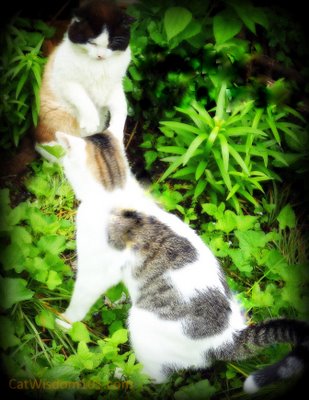 Domino play swatting Odin. Neither displays defensive flattened ears and their claws are never extended.
Domino play swatting Odin. Neither displays defensive flattened ears and their claws are never extended.
Over-Stimulated Petting Aggression: Some cats seek to be petted but when they’ve had enough or feel threatened having their belly exposed will sometimes react with aggression. Watch for the same body cues as above and over-all tension. Now that our feral Domino allows petting, he’ll swat when he’s had enough and play swat (no claws) when he wants more. Respect every cat’s limits. O
Fear or Defensive Aggression: Some cats are more sensitive to any new experiences or stimuli from thunderstorms, going on a car trip, vet visits, loud parties. These are not laid back kitties and repeat negative associations are easily reinforced. High strung, scaredy cats react with hissing, low growls, dilated pupils, flattened ears their bodies low to the ground and tail between their legs. If the behavior has escalated to this degree, do not reward the behavior with petting or treats. Once the source of the fear is identified, being pro-active in advance is more effective like preparing gradually i.e. for vet visits with de-sensitizing behavior, turning the carrier into cozy play area, using a pheromone spray and/or calming homeopathic remedies.
Territorial and/or offensive aggression: This behavior is what got our foster Ling Ling ousted out of her last two homes. Some cats are naturally inclined to being “alpha cats” or dominant in a family of other cats. Take a feisty, female Siamese like Ling Ling into a family of all males like ours and aggressive behavior is likely. The Queen Bee gets everyone under her paw quickly, eventually or not at all. Ling Ling wanted to be Queen Bee, but Merlin who reigns supreme, mellowed but not relinquish his control.
Any time a new cat is introduced to one or more cats, there will be territorial aggression in varying degrees. (I’ll be posting article on tips for easier introductions). Even in happy cat family hierarchies, skirmishes can occur as the years go by. Gris Gris loves to play diva, goad Odin and then shriek bloody murder when Odin jumps him. Merlin loves to block the stairs and demands the “password” before allowing anyone past. The only way to tell the difference between real aggression and normal play is body cues. In Ling Ling’s case, she stalked Gris Gris with offensive aggression, seeking him out because he was the most submissive of the bunch. Note: her confident tail as she sniffs him out crouched in a dark corner, her ears forward and alert and hair on her back beginning to bristle. She can’t see him yet but knows he’s near.
She tolerated and played with Odin because I engaged them in play from a comfortable distance with a dangling toy on a long pole. Gradually, their personal space or comfort zone was reduced to a few inches from each other. Merlin, with his limited vision couldn’t see her but could smell her and hunted her until she responded with defensive aggression.
Both defensive and offensive aggression uses body cues to make cats appear larger and more imposing. It began with agitated tail lashing and beware, poof the tail puffed straight up into a bristly, bottle-brush, or “raccoon” tail, flattened ears, a humped “Halloween cat back”. Ling Ling would hiss and if she had teeth she would have bared them, but things never escalated because Gris Gris would run away. Just as quickly, about a minute later…
she’d resume her “Me, aggressive? Don’t be silly” pose. Note: the base of the tail is still bushy. Cat behavior and communication is complicated, elegant, sophisticated and endlessly fascinating. Every cat has their signature variation of the classic postures. The more you observe your cat, the more you’ll learn about your cat but

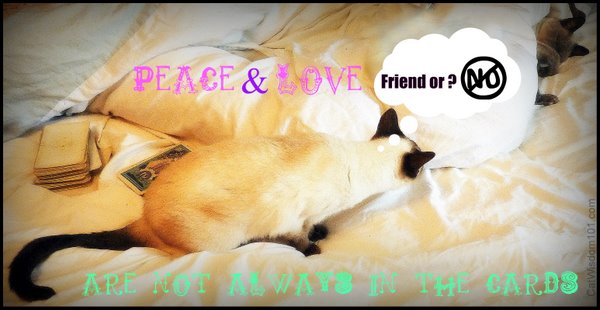
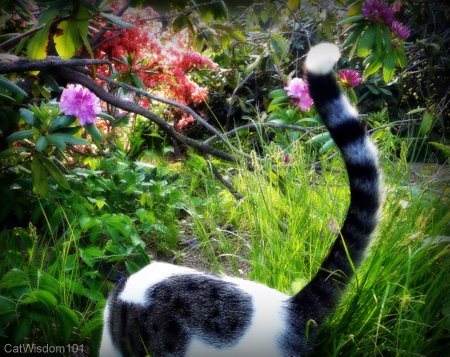

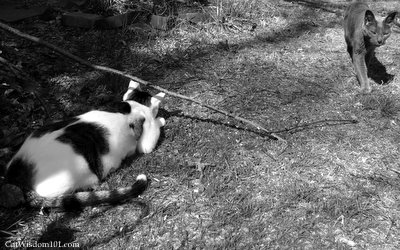
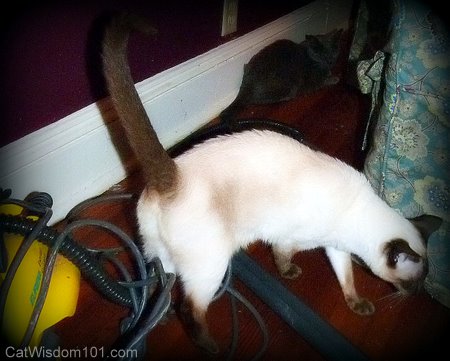

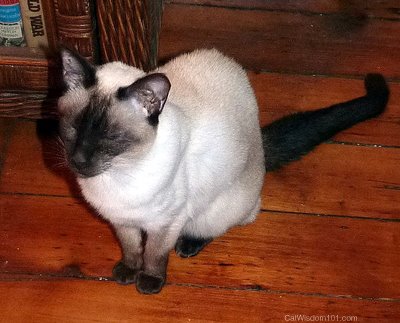
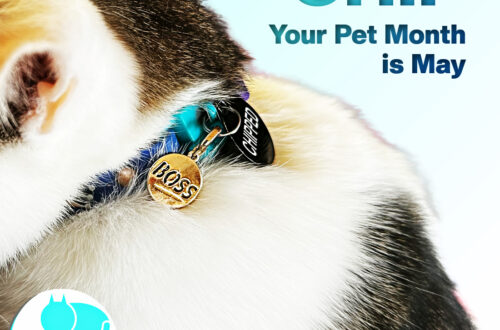
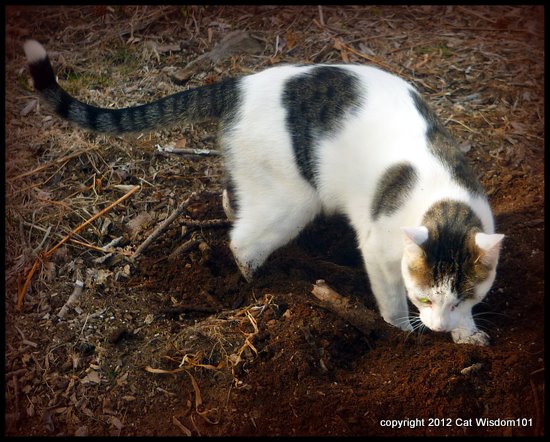

8 Comments
Oui Oui
I wanted to wait to read this so i wouldn’t have to just blow through it. Our Julie is Queen of the house, and she will not share. She doesn’t like other cats, and relentlessly hunts Mica Moo. She does tolerate her brother & Oui Oui, but they had better respect her personal space. Mica Moo is also a queen bee, but she is afraid of Julie. Julie fears no one. She is harder to read because of her long fur. You can’t see if her hackles are raised and her tail is always bushy. Posture & facial clues are important, as is just knowing her personality.
The Island Cats
Very informative! Unfortunately, we show some of that aggressive behavior…’specially Zoey and Wally…mostly fear aggression.
We can’t wait for the birthday party!!
Brian
Thatq was great info! We have that offensive aggression with Sister Precious and can use all the help we can get! We will be at the pawty!!!
Marg
We sure will try to get her tomorrow. That sure was an informative post. I need to come back and read more when I have time. I am interested in the aggression part since I have a couple of cats here that chase the other ones. Take care.
Cat's Cats
Super post!!! My four boys all get along well but that said I’ve seen my share of skirmishes too; thankfully a some paw whaps or high speed chase around the house is usually the worst of it:-)
Cheysuli
We can’t wait to go to the party. Having always had several cats the Woman is always watchful for aggressive behavior. Georgia was always the Queen Bee and she and the alpha Male who came before often butted heads. We are still learning what is going on as Ichiro settles into the household. She expects to see some more issues during the two moves coming up and we’ll see how that works out.
Anonymous
thanks for such an informative post! We are going to do our best to be at the party for Merlin tomorrow!
boomermuse
Thanks, our assistant was so late getting this post out.